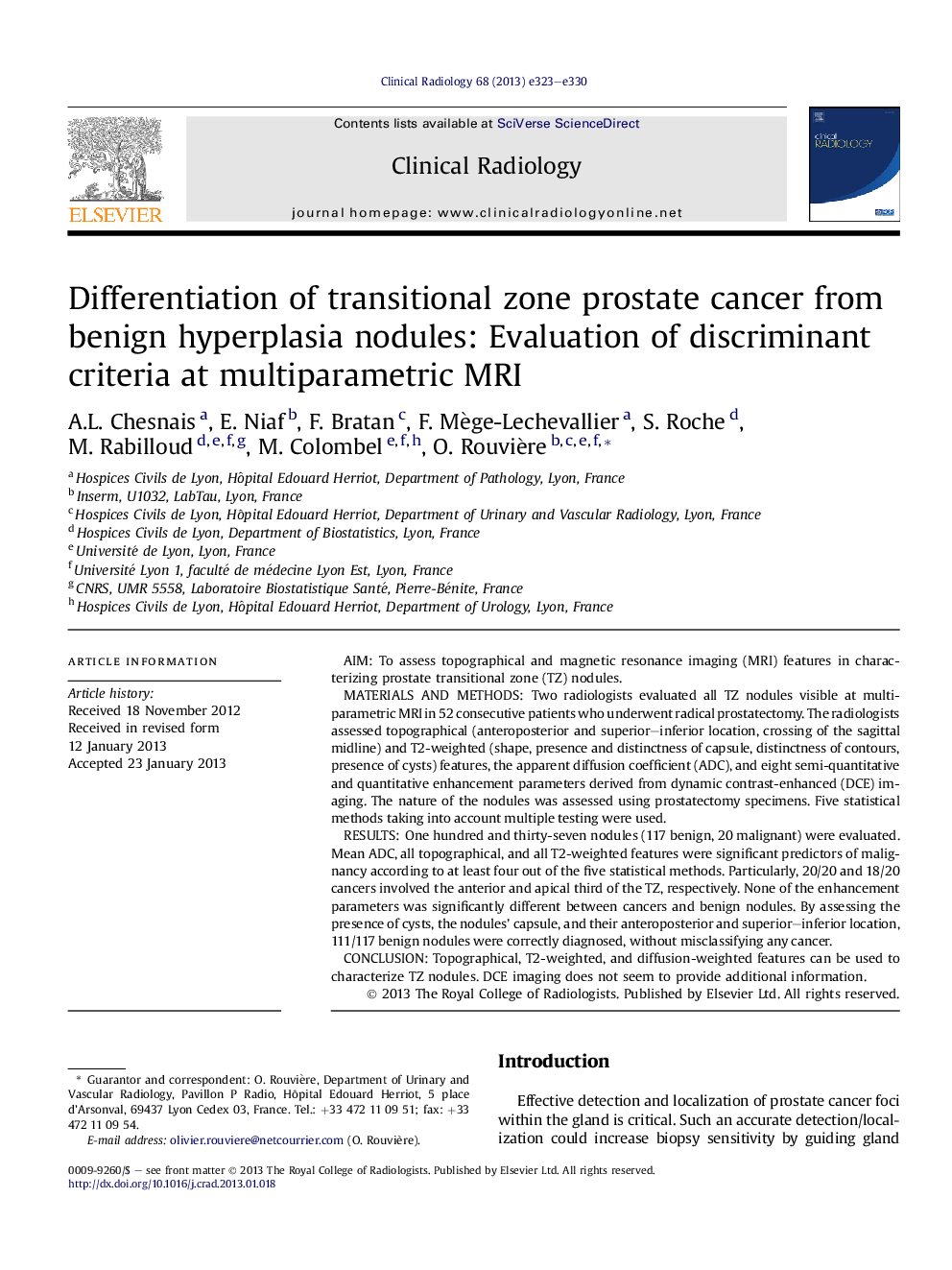| Article ID | Journal | Published Year | Pages | File Type |
|---|---|---|---|---|
| 3981904 | Clinical Radiology | 2013 | 8 Pages |
AimTo assess topographical and magnetic resonance imaging (MRI) features in characterizing prostate transitional zone (TZ) nodules.Materials and methodsTwo radiologists evaluated all TZ nodules visible at multiparametric MRI in 52 consecutive patients who underwent radical prostatectomy. The radiologists assessed topographical (anteroposterior and superior–inferior location, crossing of the sagittal midline) and T2-weighted (shape, presence and distinctness of capsule, distinctness of contours, presence of cysts) features, the apparent diffusion coefficient (ADC), and eight semi-quantitative and quantitative enhancement parameters derived from dynamic contrast-enhanced (DCE) imaging. The nature of the nodules was assessed using prostatectomy specimens. Five statistical methods taking into account multiple testing were used.ResultsOne hundred and thirty-seven nodules (117 benign, 20 malignant) were evaluated. Mean ADC, all topographical, and all T2-weighted features were significant predictors of malignancy according to at least four out of the five statistical methods. Particularly, 20/20 and 18/20 cancers involved the anterior and apical third of the TZ, respectively. None of the enhancement parameters was significantly different between cancers and benign nodules. By assessing the presence of cysts, the nodules' capsule, and their anteroposterior and superior–inferior location, 111/117 benign nodules were correctly diagnosed, without misclassifying any cancer.ConclusionTopographical, T2-weighted, and diffusion-weighted features can be used to characterize TZ nodules. DCE imaging does not seem to provide additional information.
